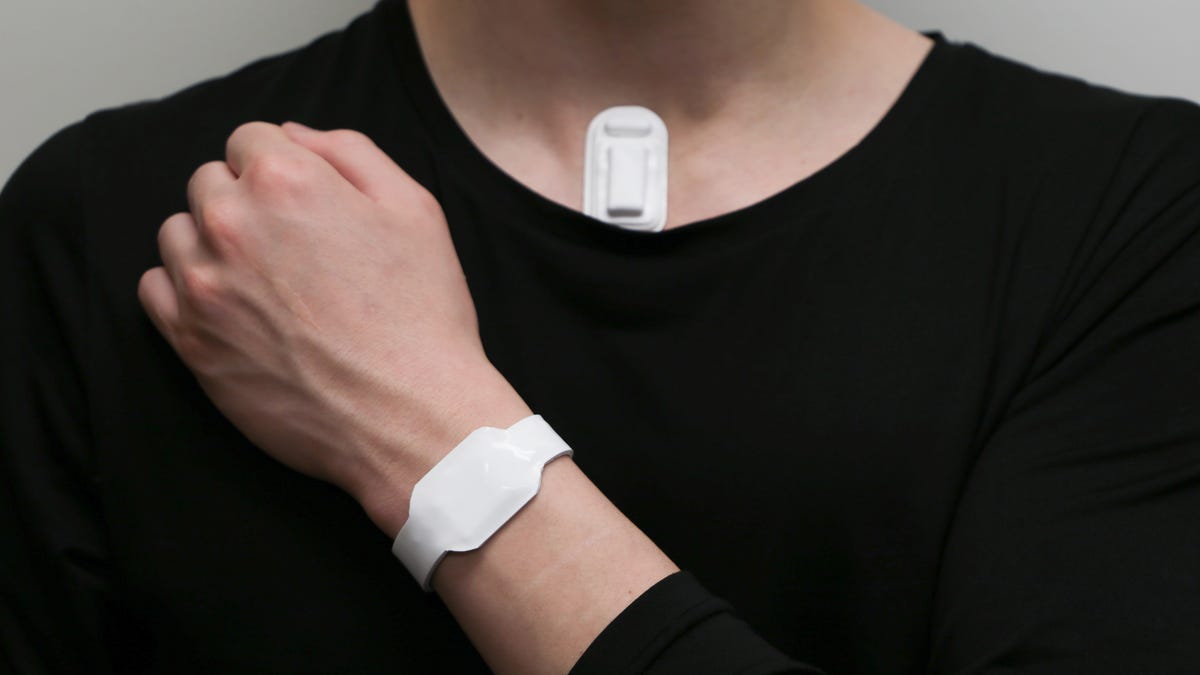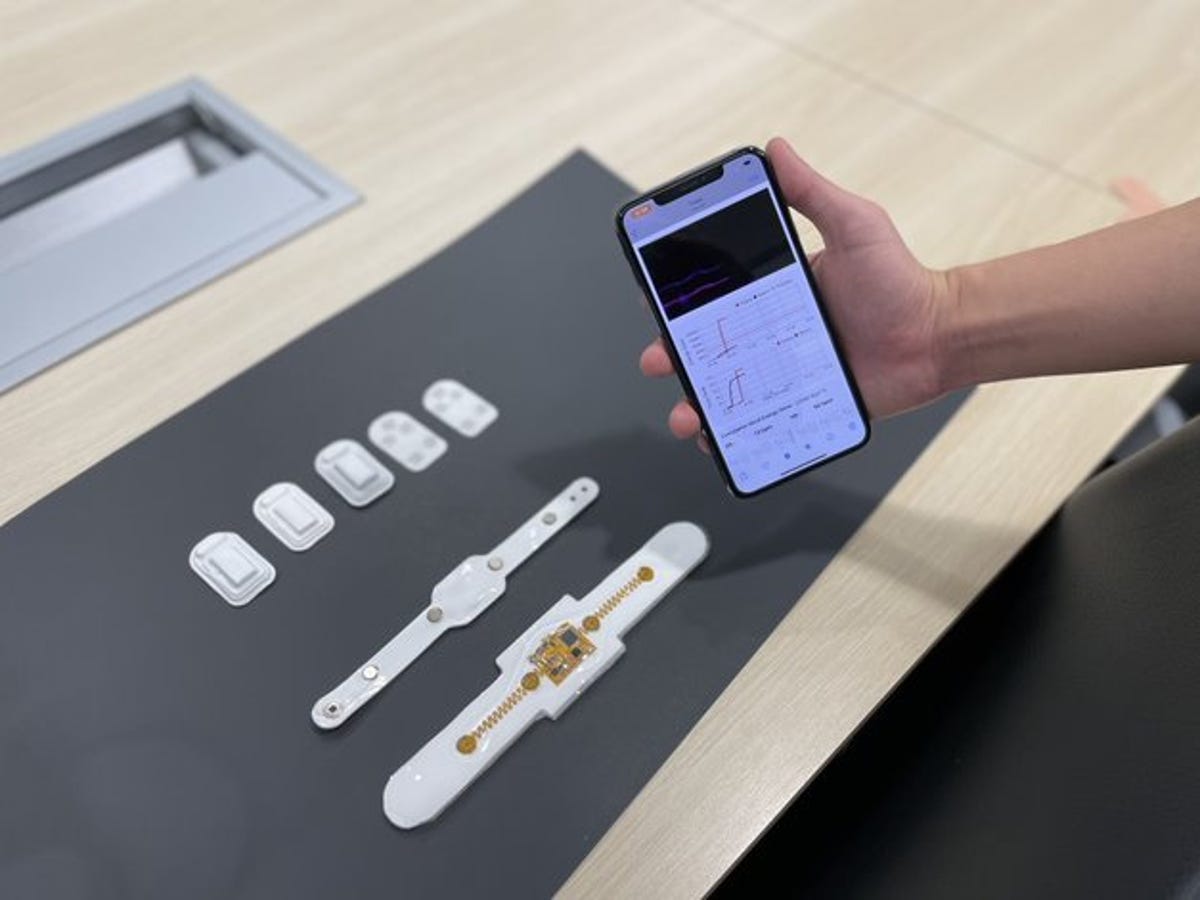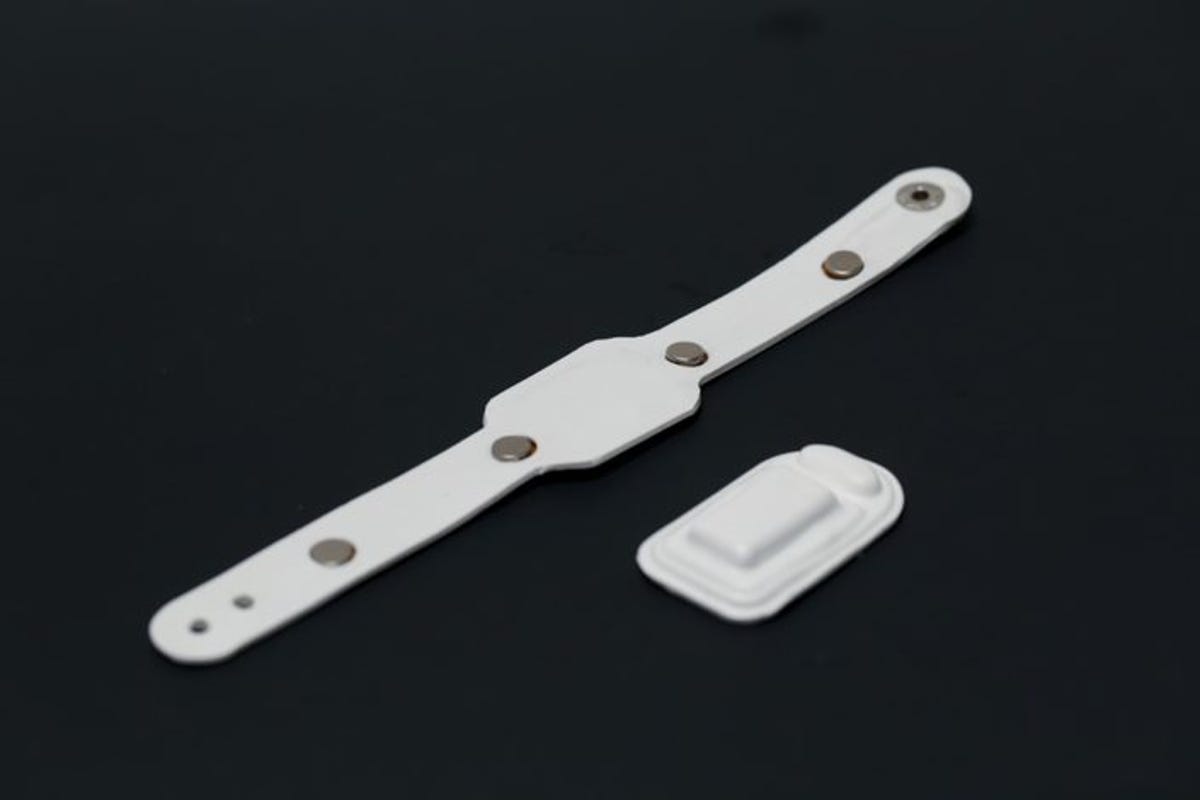
This small, soft device can record your voice patterns. It’ll send an alert to the wristband when you’re nearing your “vocal budget.”
Northwestern University
If you’ve ever been to a loud event — frat party, rave, basketball game — and returned home to find your voice shot, scientists from Northwestern University have been thinking of you.
In this week’s Proceedings of the National Academy of Sciences, they announce what they say is the first wireless, postage stamp-sized device to monitor your vocal use if you anticipate scream-singing, orating, cheering, lecturing or any other sort of intense speaking situation.
Attached to the chest, the soft, flexible prototype can detect and record subtle vibrations generated as a consequence of your voice activity. Then, via Bluetooth, it alerts an app-synced wristband when you’re reaching what the team calls a “vocal budget,” which is customized based on individual voice habits. You can also opt to wear a smartwatch for alerts instead of the device-specific wristband.
Either way, once alerted, you’ll know it’s time to rest your voice before you risk hurting your vocal cords.
“It’s easy for people to forget how much they use their voice,” Theresa Brancaccio, a voice expert and co-author of the study, said in a statement. “Your voice is part of your identity — whether you are a singer or not. It’s integral to daily life, and it’s worth protecting.”


Northwestern University
According to the researchers, other vocal-monitoring devices use microphones that raise privacy concerns or are too cumbersome to be used in many real-life environments.
By contrast, this invention’s wireless, small, bendable and easier to hide depending on what you’re wearing. “Once it’s on, I don’t even notice it,” Brancaccio said. “It’s super light and easy.”
And, while this device could benefit anyone who anticipates having to compete with booming music, loudspeakers or parade noises with only the natural sound of their voice, it may be especially useful for those who need to talk loudly all the time for work.
Think, call center employees who must constantly speak emphatically over the phone, professors frequently lecturing students in large classrooms and pop singers who croon impressively high notes to cheering crowds. At worst, a singer’s career could take a serious hit as a result of vocal fatigue because such muscle strain can prevent them from hitting the same notes they previously could with ease.
This is likely why the team tested their prototype on a team of classical singers ranging from deep basses to higher sopranos. Each subject wore the device while humming, singing, reading, and engaging in other forms of vocal activity.
“Seasoned classical singers tend to be more aware of their vocal usage because they have lived and learned,” Brancaccio said. “But some people — especially singers with less training or people like teachers, politicians and sports coaches, who must speak a lot for their jobs — often don’t realize how much they are pushing it. We want to give them greater awareness to help prevent injury.”
Basically, when you overuse your voice, you risk swelling and sometimes even damaging the tissue of your vocal cords, or vocal folds. It’s similar to how running for a really long time can make your legs feel like Jell-O because your muscles get tired.
Run too much and you might injure your quads, shout too much and you might injure your larynx. This is also why, the team explains, the vocal device could one day help patients with voice disorders, such as vocal paresis which causes a weak and breathy voice as a result of nerve injury, cancer, stroke or a viral infection.
“There is evidence that even brief 15- to 20-minute periods of total silence interspersed throughout the day can help vocal fold tissues recover and repair,” Brancaccio said.


Northwestern University
The device also uses algorithms to distinguish between when a wearer is speaking or singing while measuring voice amplitude and frequency. That bit could be a game-changer for singers interested in tracking their vocal activity.
“Those two parameters are most important in determining the overall load that’s occurring on the vocal folds. Being aware of those parameters, both at a given instant and cumulatively over time, is essential for managing healthy patterns of vocalization,” John A. Rogers, a bioelectronics expert who led the device’s development, said in a statement.
People mainly run into trouble is when events pile up, Brancaccio said. “They might have rehearsals, teach lessons, talk during class discussions and then go to a loud party, where they have to yell over the background noise. Then, throw a cold or illness into the mix. People have no idea how much they are coughing or clearing their throats. When these events stack up for days, that can put major stress on the voice.”
